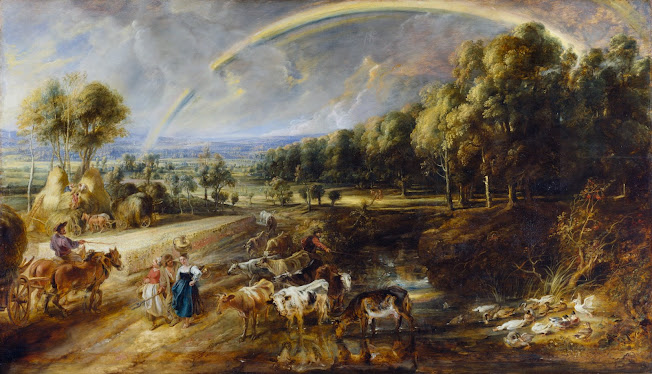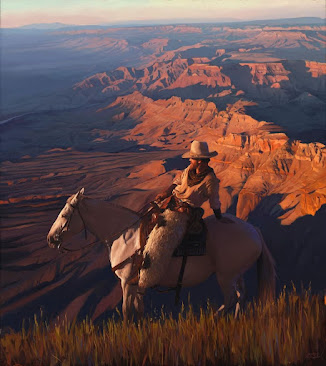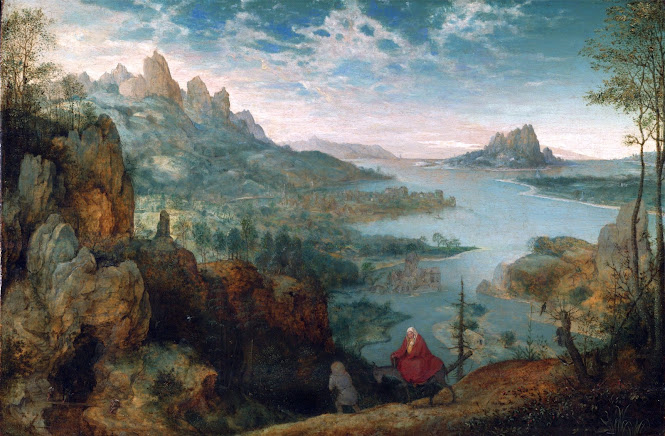Baroque period
This painting is titled "The Rainbow Landscape" by baroque painter Peter Paul Rubens. The work was finished in 1637 and was a way for Ruben to pay homage to the great Flemish tradition of painting landscapes. The piece celebrates the diversity of life and the position we as humans are in to rule over it. You can see this in the classic baroque style of rich colors used to create focal points around the humans, but also giving some of this richness to the animals to maintain their importance second to the humans. All of this is under a massive rainbow that breaks into 3-dimensional space as it comes out of the distant back towards the viewer. the rainbow seems to embody the riches of the land and the blessing of a good crop yield seen in the rainbow ending over the piles of what appears to be wheat.
The landscape has an interesting connection to the Council of Trent, Ruben was a convert to the catholic church and his paintings celebrate the divine hierarchy of life. In this painting in particular he respects the importance of humans as being created in God's image, then animals, and finally in the least focus of the painting the foliage and plant life. By creating a hierarchy of importance among these three things Ruben seeks to reveal the nature of God's creation. This is an important element of his art that continues the catholic tradition of religious symbology even in something like a landscape.
references



The composition of this painting works very well. The artist’s expert use of linear perspective makes me feel like I can see for miles within this piece. My eye is drawn back and down through the trees and then pulled up into the sky with the arch of the rainbow. It really is a beautiful landscape and Ruben’s soft and airy techniques used here make it feel so calming. I think the rainbow is also used as symbolism for God’s grace, which definitely ties into Ruben’s convert to Catholicism.
ReplyDeleteI really like how the colors appear vibrant but yet dark at the same time. Ruben seemed to highlight the different aspects of the painting in the order you described at still made it seem like it was the sunlight coming through and sort of brightening up the scene. Due to the catholicism aspect it is more than likely meant to be God shining light on his children and flock. I whould have to disagree with the previous comment about the rainbow being meant to be seen as God's grace. To me that would be the sunliught coming from the corner. The rainbow to me is adds more of a magical aspect to it.
ReplyDeleteThis is such a beautiful piece great selection! I agree that the themes here of human importance connect to the council of Trent, where on of the goals of the council was to deal with corruption and bring the focus back to human beings. I do love paintings like this that utilize patterns in nature. The thick and dense forest is a prime example of this! Thanks for the great read by the way :)
ReplyDelete